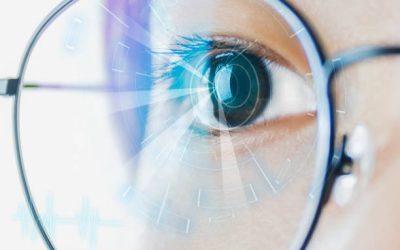Looking for something similar?
LET’S TALK ABOUT IT!
NEED
Manage the development of software to monitor and display, through directories and a mobile application, how many workspaces are in use inside big offices. The clients expressed the need for a system that could detect real-time desk occupancy because all desks are equipped with motion and electrical management.
BENEFITS
The solution offers directories, mobile applications, and computer software that show all the data collected by the IoT sensors connected to desks and rooms. This allows the optimization of workspaces and as a consequence, a cost-effective usage of electricity, air conditioning or heating (HVAC systems), desks and meeting areas.
SMART OFFICE, THE EVOLUTION OF WORKPLACES AND WORKSTYLES
As digital transformation impacts emerging work styles, a call for a rethinking of workplaces is needed.
New work styles are becoming more social, mobile, distributed, and collaborative, especially in flat corporate organizations (the hierarchical structure is limited to 1 or 2 levels), this means: lean interactions and workflows are frequent in such companies.
Most of the companies are featured by a tall organization, which is a corporate structure with more than 2 hierarchical levels.
Combining formal and informal collaboration in flat companies is easier than in tall ones and it usually enables smart offices and smart working concepts rapidly.
SMART OFFICE
A smart office itself comprises a mix of new workstyles (i.e. smart working), new work settings – phone booths, touchdown stations, focus rooms, and so on – and new space design (distributed work environment).
Smart offices facilitate smart working that enables people to work everywhere outside the office only with a laptop and a cellphone, sharing a desk.
Hence, most tall companies’ employees do demand desks and meeting area optimization, which is possible only if technology plays the key driver of smart working spaces rethinking.
As a fact, the concrete implementation of a smart office becomes a reality through (thanks to) Interlogica’s project.
THE PROJECT
Our project aims to provide distributed work desks with multiple users at once, and optimization of meeting rooms in use.
Specifically, the tech project focuses on the development of software able to monitor and display, through directories and a mobile application, how many workspaces are in use inside big offices.
THE TECHNOLOGIES BEHIND THE SOLUTION
As the project was particularly challenging, a complex technology stack has been required. From the very beginning of the development activities, the technology challenge has lied in the crucial role of IoT (Internet of things) tech, mixed with:
- a twofold and innovative database (Amazon Dynamo DB, database documentation – and InfluxData, a time-series database),
- Amazon cloud computing services,
- the client’s systems integration, (i.e. meeting rooms reservation system), and different programming languages.
A similar project might not be even conceived in the past, due to the non-existence of IoT.
This technology is the key element because it manages a huge amount of data, relying on a ridiculous amount of sensors – almost a thousand in this project – connected to each other in order to transmit data to the software which displays monitoring results and analyses.
Optimizing workspaces means a cost-effective usage of electricity, air conditioning or heating (HVAC systems), desks, and meeting areas.
Companies willing to implement smart office solutions should always have a facility manager, devoted to monitoring and managing the smart office concept in order to redefine or maintain the original workplace optimization strategy.
As mentioned before, this project relies on Amazon cloud computing services in order to get:
IaaS (infrastructure as a service), is an instant computing infrastructure, provisioned and managed over the Internet;
Dynamodb, a fully managed proprietary NoSQL database service.
What makes this project valuable and innovative is the daily audit of the smart office solution through the underlying technology.
In the past, metrics were acquired occasionally and randomly by expert analysts. Although Smart Office has been a concept dating back to the end of the ‘90s, the previous analysts involved in the audit did not totally figure out how much useful were those measurements.
Today, the software can display real-time and time-series analytics handling the data coming from all the integrated applications.
The system detects real-time desk occupancy because all desks are equipped with motion and electrical management sensors.
All the collected information are displayed on directories, mobile application, and on the facility manager desktop via software.
THE APPROACH TO THE PROJECT
Another interesting aspect of this project is the cross-language approach, necessary to tackle different steps:
Java to work on the sensors paired with KURA () Javascript to manage Aws Lambda () AngularJS to develop the frontend solution ()
The project reveals pair-programming and regression test benefits: on one side, pair-programming is an Agile software development technique that is useful to share knowledge, identify problems, and quickly find solutions. On the other side, the added value of regression tests stands in preventing emerging critical development issues.
The project was even challenging because has implied many problem-solving techniques in terms of coding and software architecture.
(*) Kura is the software that runs over a Raspberry for which ad hoc modules have been created in order to be connected to the sensors.
(**) AWS Lambda is an event-driven, serverless computing platform provided by Amazon as a part of Amazon Web Services. It is a compute service that runs code in response to events and automatically manages the compute resources required by that code.
(***) AngularJS is a JavaScript-based open-source front-end web application framework mainly maintained by Google and by a community of individuals and corporations to address many of the challenges encountered in developing single-page applications.



